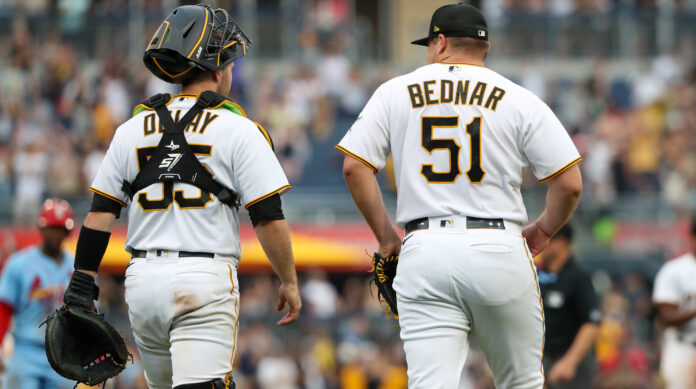Major League Baseball’s competition committee approved four rule changes for the game in 2024. The four changes are as follows, according to Jesse Rogers of ESPN:
-18 second pitch clock with runners on
-4 mound visits, down from 5
-If a pitcher starts to warm up before an inning, he must face at least one hitter
-The runner’s lane to first has been widened to the infield grass
The most notable rule change to me is the reduction in the pitch clock time. Last year, MLB implemented a 20-second pitch clock, with violations of a called ball if a pitcher didn’t throw the pitch in time, or a called strike if the batter didn’t step into the box in a timely manner. The pitch clock adds a mental component to the game where pitchers need to collect themselves quicker and throw their pitch within a set time period.
The reduction of two seconds doesn’t sound like much, but it comes when runners are on base, which is already a higher pressure situation. The pitcher needs to split his focus on the runner, and the batter at the plate, while needing to deliver in a quicker manner. This could be a problem for pitchers who work slower.
The Pirates had 15 pitchers with a pace of 18.5 seconds or more last year. Their closer, David Bednar, averaged 20 seconds between pitches. If a runner is on, Bednar now has to quicken his pace by at least two seconds per pitch. Bednar was up against the pitch clock last year, but only had one violation, despite throwing over 1100 pitches.
The pitcher who saw the most violations was Johan Oviedo, who had 11 called balls against him in 2023. Oviedo worked at an average pace of 18.5 seconds per pitch, but at that average pace, he had 11 moments where the clock ran out on him. His violation count ranked third in Major League Baseball. Oviedo is out for the 2024 season, but when he eventually returns under this rule, his pace will have more urgency to improve than other pitchers. Oviedo had almost 3,000 pitches this past year, so the violations represent a microscopic portion of his overall season.
Roansy Contreras had four violations last year, despite an average pace that was under 17.8 seconds. Contreras was receiving violations when he was well under the average time. Now that he’s up against the limit when runners are on base, it could lead to more tight situations.
Dauri Moreta had two violations last year, and an average pace of 20.1 seconds. Like Bednar, he’s going to have to adjust his pace with runners on base.
The concern with any player who dealt with violations or a lengthier pace isn’t about the potential for more violations. The concern would be the quality of the pitches and the results with runners on base. Bednar and Moreta were two of the best on the team last year with runners on, making it unlikely that this change would derail them. Oviedo and Contreras both struggled with runners on, and they’ll have less time to think and prepare to execute those types of pitches in the future.



